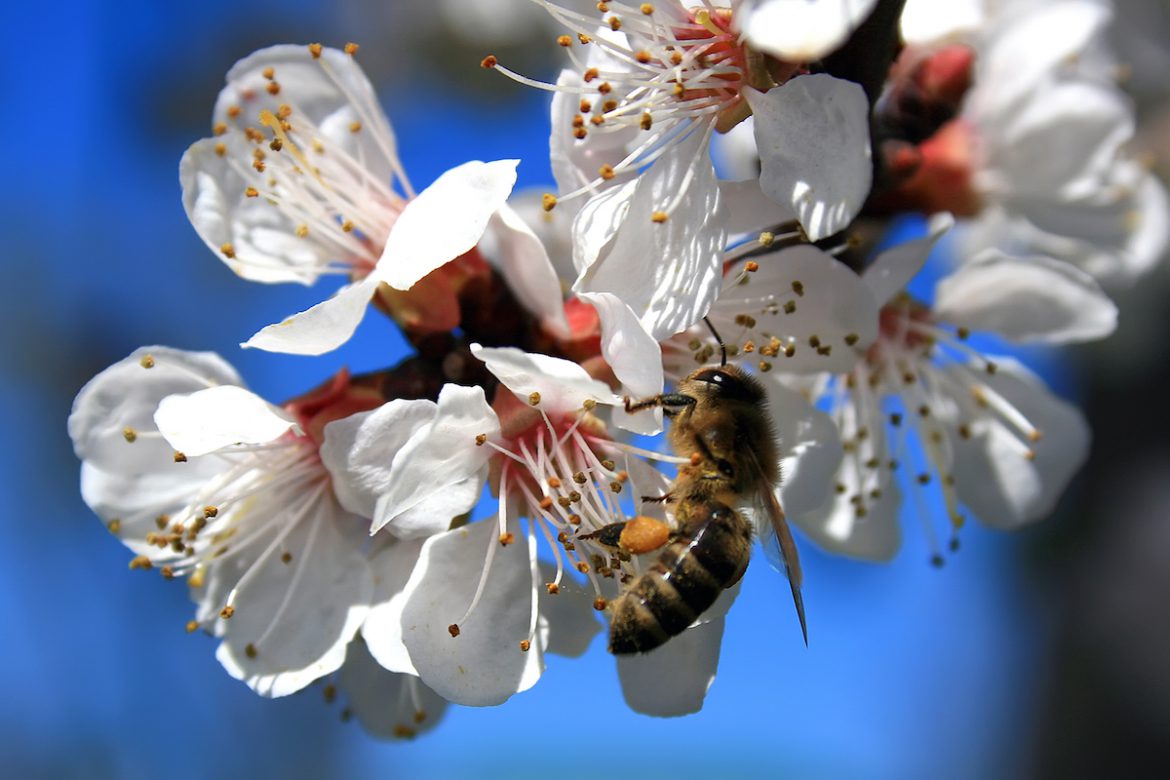Tips to Prevent Bees
While we love bees for their honey, we may not want them disrupting our everyday life. Truly the best way to rid of bees is by taking steps to prevent them from coming around. Please remember that Bees are beneficial and essential to our ecosystem. Despite their bad reputation, bees are not aggressive and will only sting in self-defense.
Our East Bay Regional Parks reminds us, “Honeybees and native bees pollinate more than 30 percent of the foods we eat, helping plants produce their fruits and seeds. But while it takes 20,000 honeybees to pollinate an acre of apples, it only takes 250 native mason bees to do the same. Native bees are not only more efficient than honeybees; they also work longer days and longer seasons.
With about 1,600 species of bees in California alone, native bees come in a variety of shapes and sizes. In general, they are attracted to blue, purple, yellow, and white flowers with an open-cup shape and aromatic fragrance, but just as bee species are diverse, so are the flowers they will visit. If you have a yard, balcony, or window box, an internet search for bee-friendly California native plants can give you ideas for plants to support native bees in your space. ”
There are many different species of bees but, three specific types usually appear in residential areas:
- Carpenter bees
- Bumble bees
- Honey bees
When identifying the bees, it is important to keep a close eye as they can have similarities and be mistaken for one another.
Bumble Bees

bumble bee
Also called the bombus pennsylvanicus, bumblebees can be difficult to identify as they look similar to carpenter bees. These bees are somewhat large as they can be half an inch to 1 inch long, they have yellow stripes on their body, and black behind their wings. Bumblebees can be commonly found in open areas such as parks or fields. Their hives are usually at ground level areas such as compost piles or under sheds but, they could also be found in trees and birdhouses. Only when bothered will the worker and queen bumble bees sting. Fortunately, they are unable to sting multiple times.
Honey Bees

honey bee
Known as the Apis Mellifera, the honey bees can be seen near homes and can be commonly used by beekeepers. Honey bees come in the colors black and yellow and are somewhat smaller compared to bumble and carpenter bees; they are one-half to five-eighths of an inch. These bees are very social as their system is revolved around the queen bee. The worker bees from these hives are known for stinging when provoked and with their barbed stinger, it remains attached to whatever they stung. Similar to the bumblebee, they cannot sting multiple times as their stinger becomes disfigured from their bodies and eventually kills them.
Carpenter Bees

Male Carpenter Bee

Female Carpenter Bee
These bees are also known as Wood Bees and they can be commonly mistaken as other types of bees. One way to tell the difference though is that carpenter bees are not fuzzy, they have a shiny black abdomen, and a black dot on the thorax; these bees are also solitary and not social.
Commonly found around homes with open gardens, woods, fields, and parks. They burrow into wood instead of having hives, with entry points that can be found in rafters, attics, trees, and fence posts. They create galleries that can be up to 1 foot long and pack it with eggs filled with pollen. Carpenter bees do not cause much destruction until they grow in population and start structuring more nests in the area. The ones you’ll typically find in the summer are male and are called “white-faced-bees” for the white spot on their head; they typically sting only if attacked.
Bee Prevention
Bees are typically in search of food or pollen. If you want to prevent their presence around your home, it would be best to remove these sources. You can do this by taking out the trash and limiting food containers you keep outside. Carpenter bees create tunnels in wood to lay their eggs, so make sure all wood surfaces are treated as it will prevent them from burrowing on it.
What You Don’t Want To Do
When getting rid of the bees do not try to trap them in their hive as they will always find a way out and it will provoke them more. Hives that have honey should be removed professionally as it can be a messy process and damage could be made. You also don’t want other insects attracted to the honey after the bees are gone. People such as children, as well as pets, should not be nearby when removing the bees, and a protective suit should be worn. When coming into contact with the bees remember that they can be easily agitated. For example, bright lights should be avoided especially at night as it provokes the bees. The truly best method to rid of a bee infestation is to call a beekeeper.
If you suspect you may have a bee problem, feel free to give us a call. As trained professionals, we are knowledgeable about the best method to use to eliminate your bee problems and to keep your family safe.
AANTEX Pest Control offers a variety of free inspections and serves the entire Bay Area.
Call our Brentwood office at 925-240-5100 to schedule your pest control consult today.


